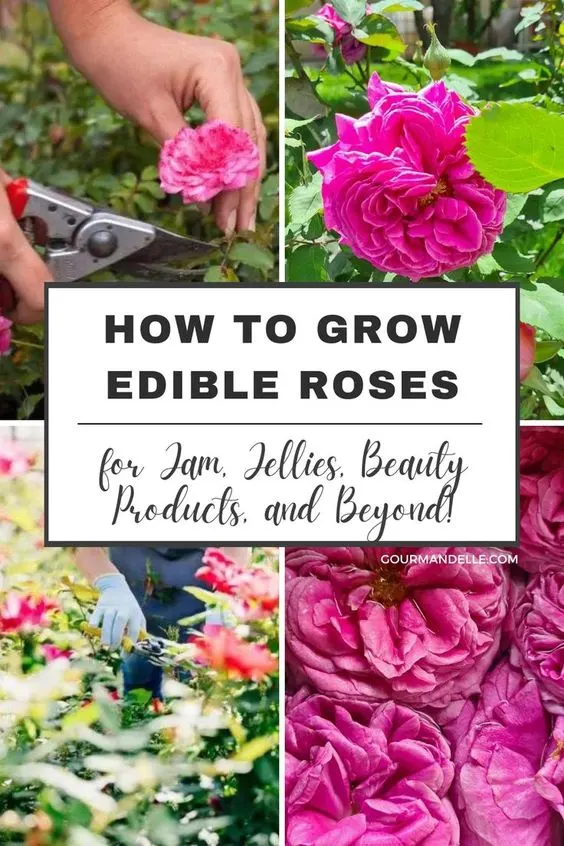Learn how to grow edible roses for delicious jam, jellies, and beauty products in this comprehensive guide! Unleash your creativity and indulge in the exquisite flavors and benefits of these versatile blooms. Start your own edible rose garden today and elevate your culinary and beauty experiences to new heights.
Today I will talk about a special plant that brings beauty and flavor to cooking and cosmetics – edible roses. Roses are not only beautiful flowers to admire in the garden or in a flower bouquet, but can also be used to add a delicate taste and subtle aroma to food. In addition, extracts and oils obtained from rose petals have been used for centuries in cosmetic products for their beneficial properties.

Why grow your own edible roses? By growing them in your own garden, you can have total control over the process, and you can be sure that your petals are organic and grown in ideal conditions. Moreover, growing edible roses allows you to experiment with different flavors and colors, as there is a wide variety of edible roses available. Thus, you can add a personal and creative touch to the kitchen and to your personal care routine.
In the comprehensive guide below, I will reveal all the secrets of growing and using these wonderful flowers, I’ve gathered through lots of reading as well as trial and error in my garden. I will offer you practical advice and delicious and natural recipes that you can try. Thus, you will enter the fascinating world of edible roses and you will be able to enjoy all the advantages they bring to the kitchen and cosmetics.
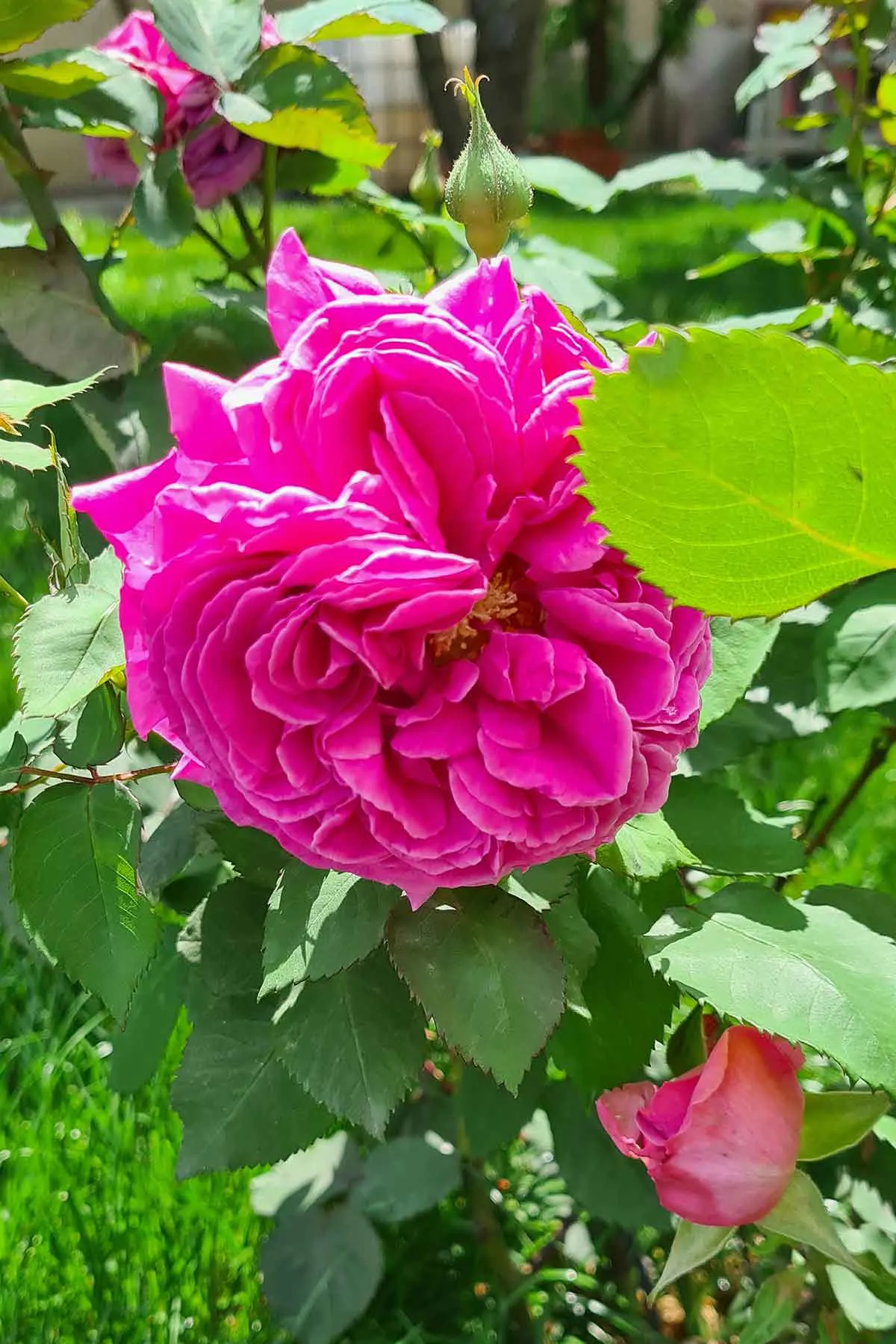
Choosing the right varieties of edible roses
When it comes to choosing the right varieties of edible roses, you have quite a few options available. Each variety has its own unique characteristics, including the aroma, color and texture of the petals. Here is an easy-to-read list of some varieties of edible roses and their selection characteristics:
- Rosa damascena: This variety of rose is famous for its strong and distinctive aroma, often described as floral and sweet. Its petals are usually pink or pale pink in color and have a soft and silky texture. This is the one I currently have in my garden.
- Rosa gallica: The Gallic rose is known for its classic beauty and delicate aroma. Its petals can have various shades of red and pink, and the texture is often denser and less silky than other varieties.
- Rosa rugosa: This variety of rose is appreciated for its rich and fruity aroma, reminiscent of wild roses. Its petals are usually pink or white in color and have a thicker and crunchy texture.
- Rosa centifolia: Also known as the rose with a hundred petals, this variety is appreciated for its intense and sweet aroma. Its petals are usually pink or white in color and have a soft and velvety texture.
- Rosa alba: This variety of rose is loved for its pure beauty and subtle aroma. Its petals are usually white or cream in color and have a fine and delicate texture.
When choosing rose varieties for edible use, you can consider your personal preferences in terms of aroma and color, as well as the texture you want in your culinary or cosmetic preparations. Experiment with different varieties and enjoy their diversity in every recipe you try!
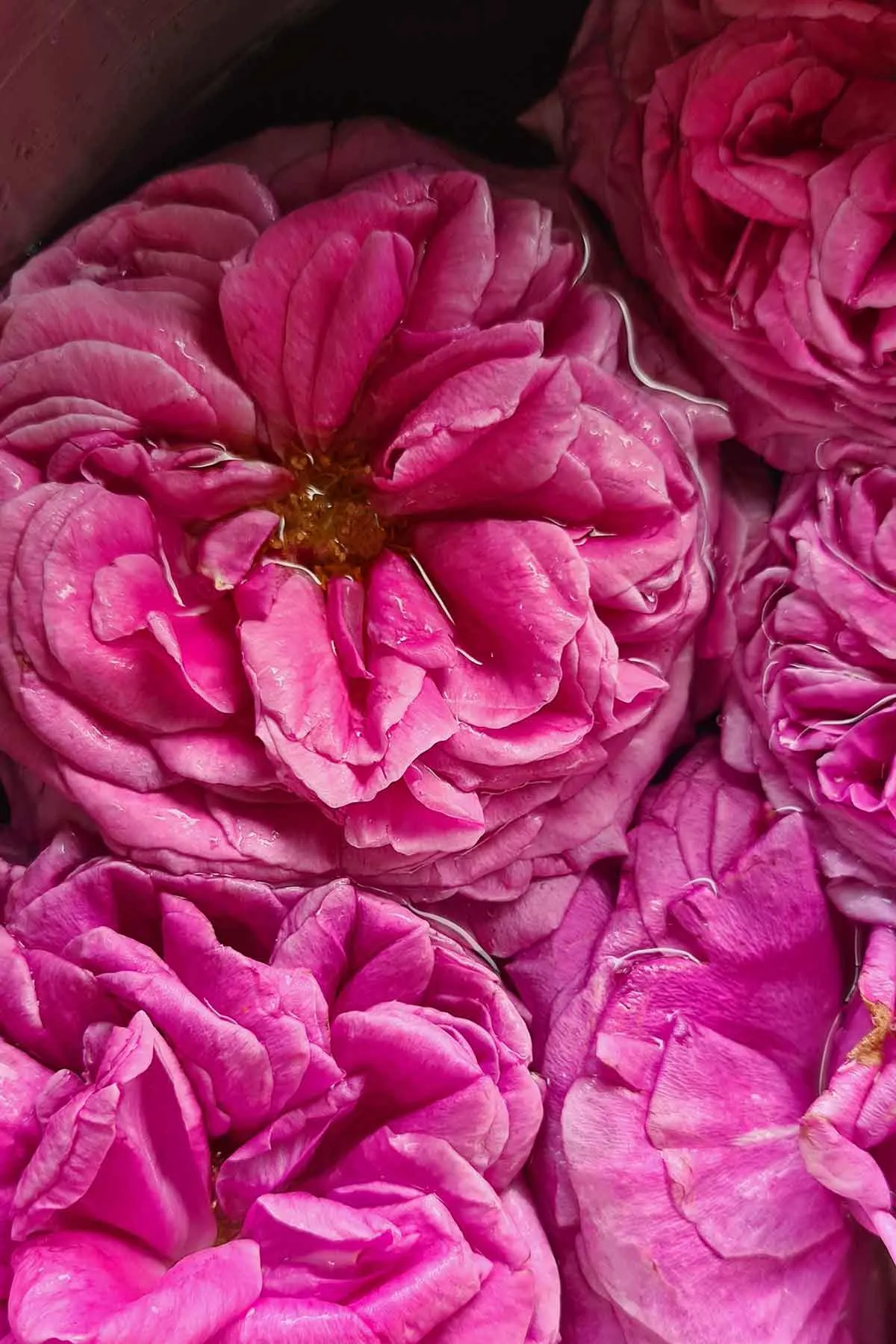
Preparing the soil and the location for planting edible roses
Soil requirements for edible roses
- The soil should be well drained, with an airy texture and rich in nutrients.
- The optimal soil pH for edible roses is between 6 and 6.5.
- Add compost or organic matter to the soil to improve fertility and drainage.
Choosing the right location for growing roses
- Edible roses prefer direct sun exposure of at least 6 hours a day.
- Ensure good air circulation around the plants and avoid areas with excessive moisture accumulation.
- Select a place that is protected from strong winds, especially in areas with cold winters.
Planting and caring for edible roses
- Plant edible roses in early spring or late autumn, avoiding periods of intense heat.
- Dig a planting hole deep and wide enough to allow the roots to develop.
- Add some compost or organic fertilizer to the planting hole.
- Place the plant in the hole, making sure that the crown (the top of the roots) is level with the soil surface.
- Regular and moderate watering is essential to keep the soil moist, but not excessively moist.
- Apply a layer of mulch around the plant basin to keep the soil moist and reduce weed growth.
- Fertilizer can be applied several times per season to support healthy growth and flowering.
- Carry out regular pruning to remove dry, diseased or weak branches and to promote vigorous growth.
Planting and caring for edible roses requires patience and attention, but the reward lies in the beautiful edible flowers and their use in culinary and cosmetic recipes. Make sure you follow the tips above and enjoy the process of growing edible roses in your own space.
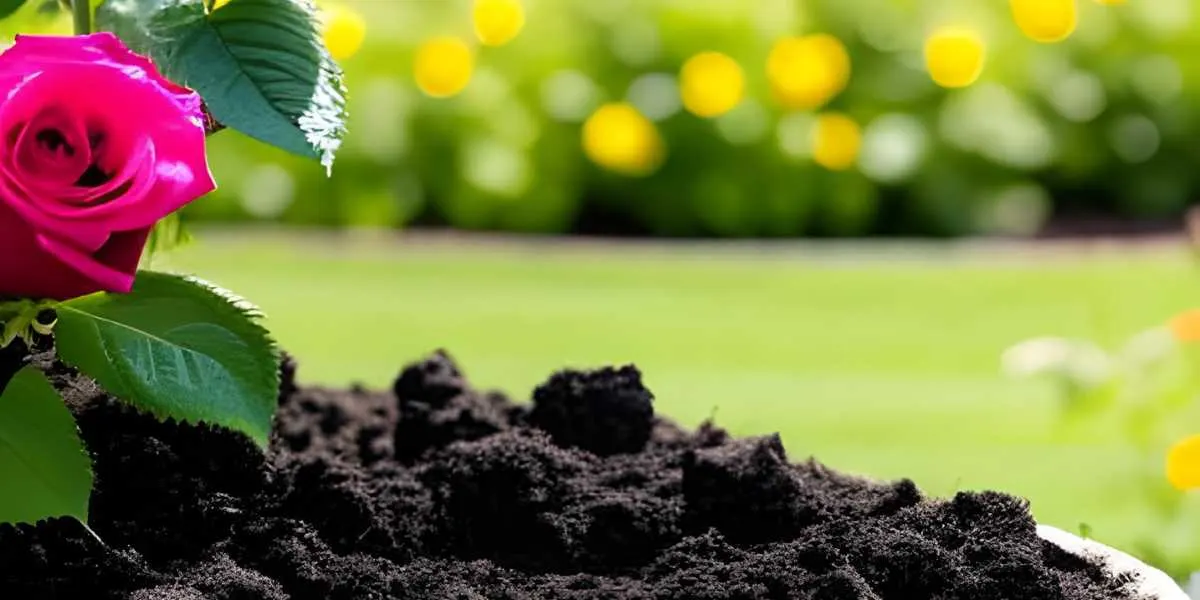
Adequate watering and feeding of edible roses
- Regular and moderate watering is important to keep the soil moist, but avoid excessive watering, which can cause root rot.
- During dry periods, water the plants deeply, making sure that the water penetrates the roots.
- Apply organic fertilizer or special fertilizers for roses, according to the manufacturer’s instructions.
- Feed the plants regularly, starting from the beginning of spring and continuing until the end of summer.
Pest and disease management
- Inspect plants regularly for signs of pests, such as aphids or lice.
- Remove insects manually or use organic insecticides in case of a moderate infestation.
- To prevent diseases, ensure good air circulation around the plants and avoid watering the leaves.
- If you notice signs of disease, such as spots or mold on the leaves, consult a gardening specialist to identify and treat the problem.
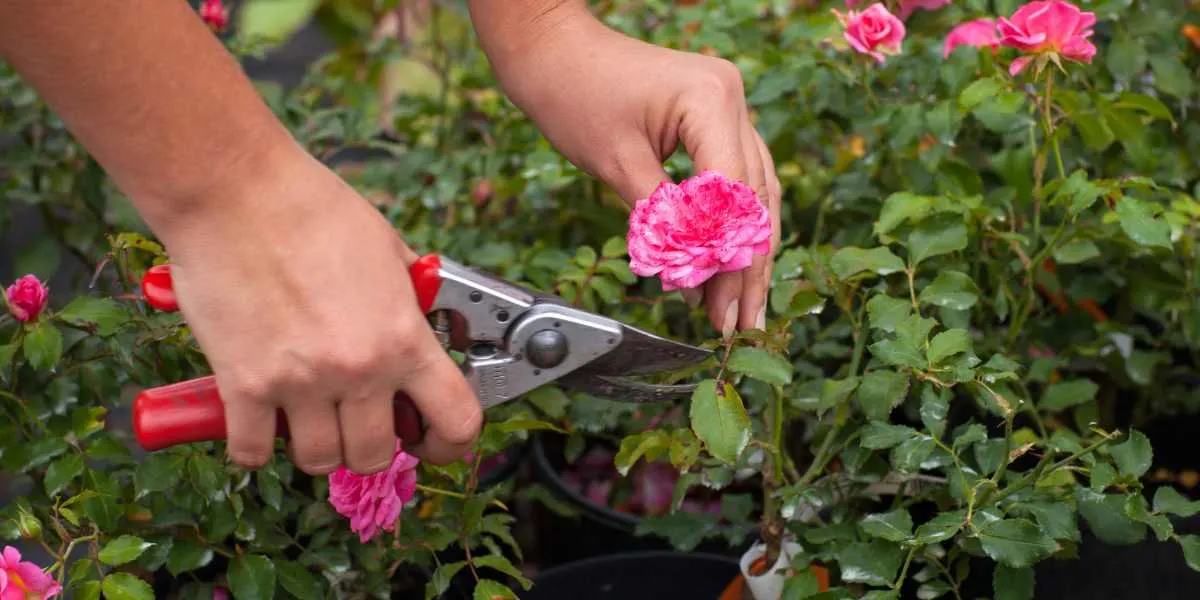
Harvesting and preservation of edible roses
- Harvest the rose petals before they open completely.
- Cut the petals carefully, without affecting other parts of the plant.
- Avoid harvesting petals that show signs of disease or are affected by pests.
- For preservation, you can dry the rose petals in a cool and dry place or you can preserve them in sugar or honey to obtain a delicious sweetener with floral aromas.
The optimal time to harvest the petals
The optimal time to harvest the rose petals is before they open completely. The rose petals at this stage have an intense aroma and texture and are ideal for use in various culinary and cosmetic preparations.
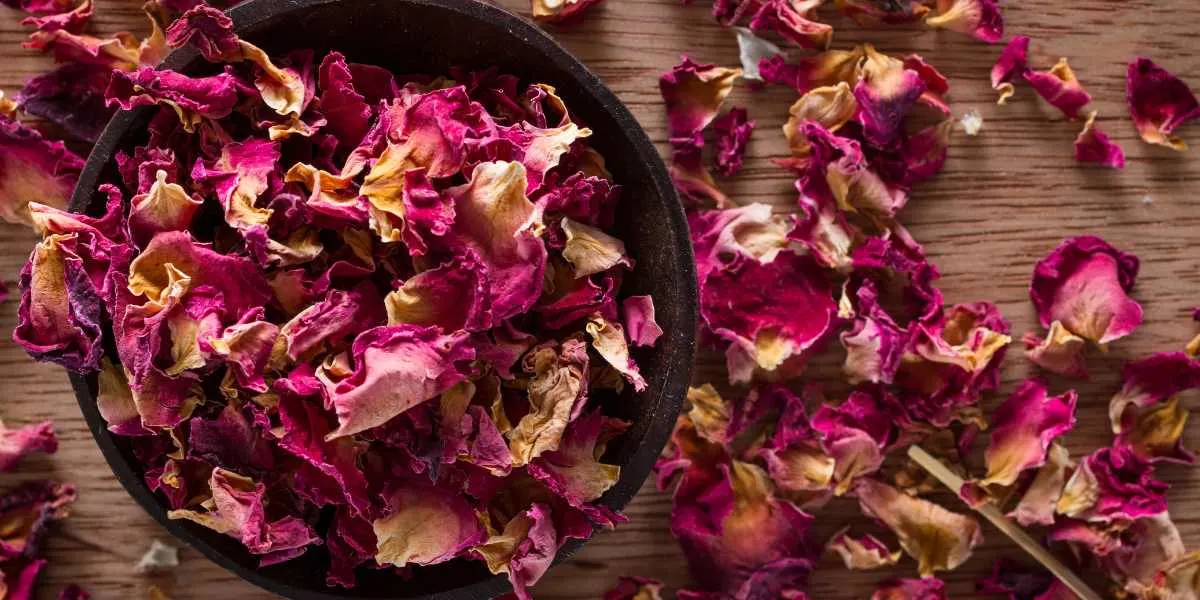
Techniques for drying and preserving rose petals
To dry and preserve rose petals, there are some simple techniques you can use:
- Air drying: Place the petals in a single layer on a tray or sieve in a dry, ventilated place away from direct light. Let the petals dry for about 1-2 weeks until they become dry and crispy. Make sure the petals are completely dry to avoid mold or damage.
- Drying in an electric oven or dehydrator: Heat the oven to a low temperature (approximately 50°C) and place the petals in a single layer on a tray covered with baking paper. Let the petals dry in the oven for 1-2 hours, checking them regularly to avoid overdrying or burning. I use drying in a dehydrator at 40C.
- Preservation in sugar or honey: Another popular method of preserving rose petals is to preserve them in sugar or honey. Place the petals in a clean jar and cover them completely with sugar or honey. Seal the jar well and let the petals keep for several weeks or even months. This will create an aromatic sweetener with the delicate aromas of roses.
Rose petal preservation methods
To preserve rose petals for later use, make sure to store them in an airtight container or airtight bags to prevent moisture and air ingress. Keep the petals in a cool and dark place to maintain their freshness and aroma.

Culinary uses of edible roses
Edible roses offer a wide range of culinary uses. Here are some of them:
- Jams and jellies: Add rose petals to your jams and jellies recipes to enrich them with delicate floral aromas. Try my rose jam recipe.
- Drinks: You can use rose petals to flavor teas, lemonades, flavored water and even cocktails. They add a subtle and refined note to drinks. Discover the floral cocktail recipe.
- Desserts: Decorating cakes, pastries, tartlets and other desserts with rose petals
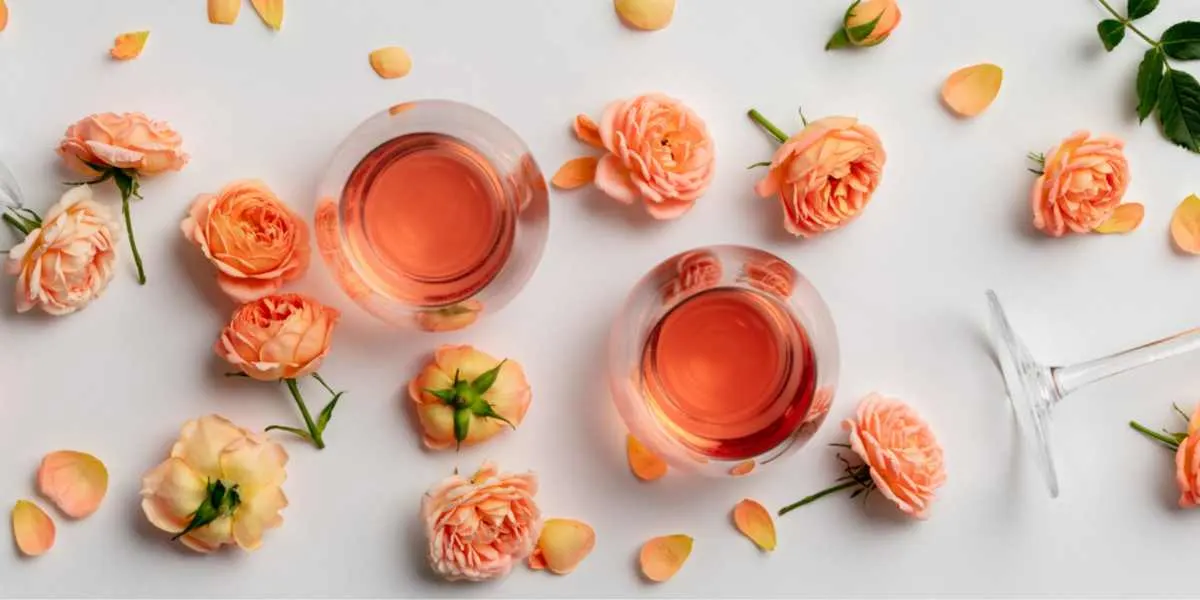
Cosmetic and therapeutic uses of roses
Preparing natural cosmetic products with edible roses is a wonderful way to benefit from their beneficial properties for skin and health. Roses are known for their moisturizing, anti-inflammatory and antioxidant properties, which can improve the appearance of the skin and promote overall well-being.
Here are some general ideas for preparing cosmetic products with edible roses:
- Rose water: Get rose water by infusing rose petals in hot water. This aromatic water can be used as a facial tonic, makeup remover or skin revitalizing spray.
- Rose oil: You can prepare a rose oil by macerating rose petals in a pure, unprocessed vegetable oil, such as sweet almond oil or jojoba oil. This oil can be used for massage, moisturizing the skin or in the formulation of cosmetic products.
- Facial masks: Mix crushed rose petals with ingredients such as clay, honey or yogurt to create moisturizing and soothing facial masks. Apply the mask on the face, let it act for a few minutes, then rinse with warm water.

The benefits of roses for the skin
- Moisturizing the skin and maintaining the optimal level of hydration.
- Calming and reducing inflammation, redness and irritation of the skin.
- Improving the texture and elasticity of the skin.
- Protecting the skin against free radicals and oxidative stress due to their rich content of antioxidants.
- Promotion of skin healing and cell regeneration.
- Reducing the appearance of wrinkles and signs of premature aging.
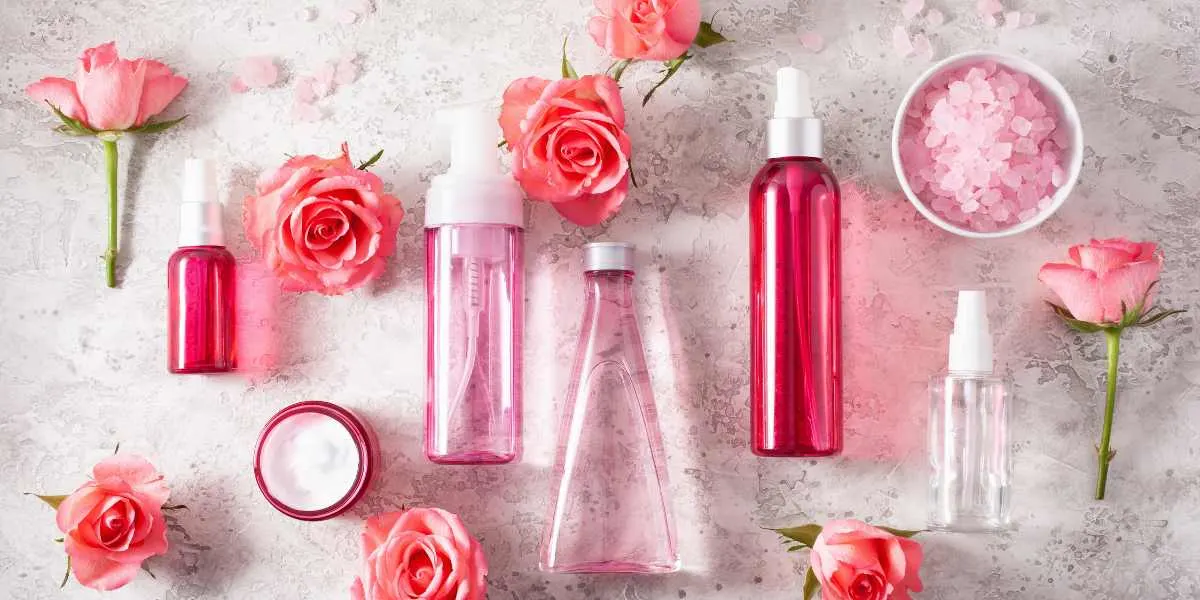
Frequently asked questions about growing roses
Some popular varieties of edible roses include Rosa rugosa, Rosa gallica, Rosa damascena and Rosa centifolia. These varieties are appreciated for their delicious aroma and taste.
The best time to plant edible roses is in autumn or spring, avoiding periods with extreme temperatures. Make sure that the soil is well prepared and that the plant receives enough sunlight.
Edible roses prefer a well-drained soil, rich in nutrients and with a neutral or slightly acidic pH level. It is recommended to add compost or manure to the soil to improve it before planting.
Regular watering is important for roses, but avoid excessive watering, as too wet soil can cause root rot. Apply a layer of mulch around the plant to keep the soil moist and to reduce weed growth.
Periodically inspect the plants for pests such as aphids or the rose moth and apply appropriate treatments such as insecticidal soap or organic products to combat them. For common diseases such as black cuff or leaf rust, remove the affected leaves and use appropriate fungicides.
Harvest the petals before they open completely, when they are still at the bud stage. The rose petals at this stage have an intense aroma and texture.
You can dry the rose petals by methods such as air drying or drying in the oven at a low temperature. For preservation, you can keep the petals in sugar or honey, or you can store them in sealed containers in a cool and dark place.
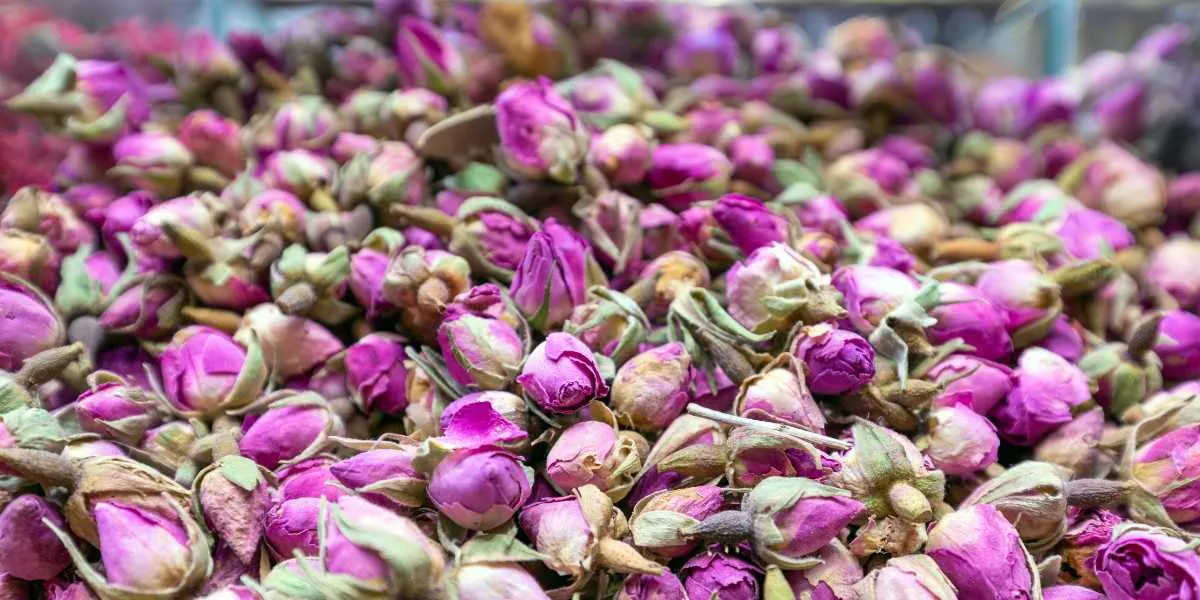
Now that you have learned about the importance of edible roses in the kitchen and cosmetics, their health benefits, growing and maintenance techniques, as well as the various ways of use, I encourage you to start your own garden of edible roses. There is nothing more satisfying than picking your own fragrant petals and turning them into delicious jams, drinks or natural cosmetics.
With a little patience and dedication, you will be able to enjoy the aromas and benefits of these wonderful flowers right in your own home. Expect a garden full of color, aroma and joy.
Do not hesitate to explore and experiment with different varieties of edible roses and bring your own creative input to their culinary and cosmetic uses. Start this journey in the world of edible roses and you will discover a new dimension of natural beauty and gastronomy.
